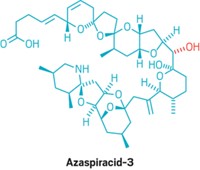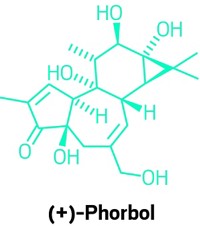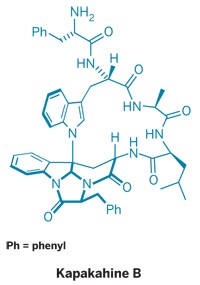Advertisement
Grab your lab coat. Let's get started
Welcome!
Welcome!
Create an account below to get 6 C&EN articles per month, receive newsletters and more - all free.
It seems this is your first time logging in online. Please enter the following information to continue.
As an ACS member you automatically get access to this site. All we need is few more details to create your reading experience.
Not you? Sign in with a different account.
Not you? Sign in with a different account.
ERROR 1
ERROR 1
ERROR 2
ERROR 2
ERROR 2
ERROR 2
ERROR 2
Password and Confirm password must match.
If you have an ACS member number, please enter it here so we can link this account to your membership. (optional)
ERROR 2
ACS values your privacy. By submitting your information, you are gaining access to C&EN and subscribing to our weekly newsletter. We use the information you provide to make your reading experience better, and we will never sell your data to third party members.
Biological Chemistry
Finally, Palau'amine
Organic Synthesis: Ring formation anchors landmark conquest of complex marine natural product
by Carmen Drahl
January 11, 2010
| A version of this story appeared in
Volume 88, Issue 2

With the help of a daring cyclization reaction, a team led by Phil S. Baran at Scripps Research Institute has completed the first total synthesis of palau'amine, a marine natural product that has captivated synthetic chemistry groups around the globe (Angew. Chem. Int. Ed., DOI://10.1002/anie.200907112).
Isolated from the sponge Stylotella agminata in waters near the Pacific Ocean Republic of Palau, palau'amine is a dauntingly complex alkaloid. It has eight contiguous stereogenic centers and a preponderance of reactive nitrogen-containing moieties. It is also highly polar, which can make it nightmarishly difficult to manipulate synthetic intermediates. The challenge of making such a complex structure has intrigued chemists for more than a decade.
Until now, "palau'amine's unprecedented hexacyclic ring system and its nasty physical properties had undermined total synthesis endeavors in leading laboratories worldwide," says Larry E. Overman, an organic chemist at the University of California, Irvine, who has worked on palau'amine and its relatives in the pyrrole-imidazole alkaloid family.
Palau'amine's biggest chemical challenge is in its highly strained core, which features a peculiar trans junction between two five-membered rings. This feature was one of a few recent revisions to palau'amine's structure proposed by an international team in 2007 (C&EN, Mar. 5, 2007, p. 12). That revision was key to finishing the synthesis, but so were a variety of synthetic tenets that are the hallmark of the Baran lab. For instance, en route to palau'amine, the Scripps team harnessed the innate reactivity of nitrogen heterocycles, minimizing the use of protecting groups (C&EN Jun. 4, 2007, p. 38).
After several attempts to make the strained core met with failure, Baran, graduate student Ian B. Seiple, postdoctoral researcher Shun Su, and colleagues tried a different cyclization strategy. They reasoned that a hypothetical molecule with a large ring, which they dubbed "macro-palau'amine", might lead to palau'amine via cyclization across the large ring. Their strategy succeeded, but not until they had explored this line of attack for nearly two years.
Overman says the cyclization step "exemplifies the innovative retrosynthetic analysis and mechanistic thinking that underpins the Baran group's remarkable string of total synthesis successes in this area."
The Scripps team didn't make the natural product via proposed biomimetic cyclizations, notes Daniel Romo of Texas A&M University, who also has worked on this alkaloid family. "Together with their elegant successful strategy, this raises intriguing questions about how palau'amine might really be made in nature."
Baran emphasized that the job isn't done. His team is working on an enantioselective version of the synthesis for obtaining gram scales of material. Even though initial reports of palau'amine's promising biological activity have yet to pan out, the structure and others like it are a fertile testing ground for chemical strategies. "The problem with most news stories about a synthesis is that they give the community a false sense of closure," Baran says. Unless chemists can routinely make large quantities of scarce natural products such as palau'amine for further investigations, the need for chemical innovation is far from over, he says. "I don't see this synthesis as an end--I see this as a beginning."





Join the conversation
Contact the reporter
Submit a Letter to the Editor for publication
Engage with us on Twitter